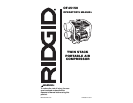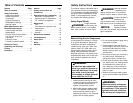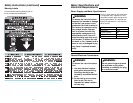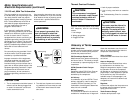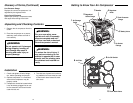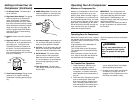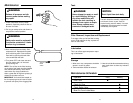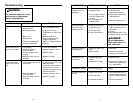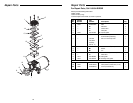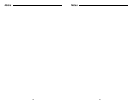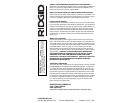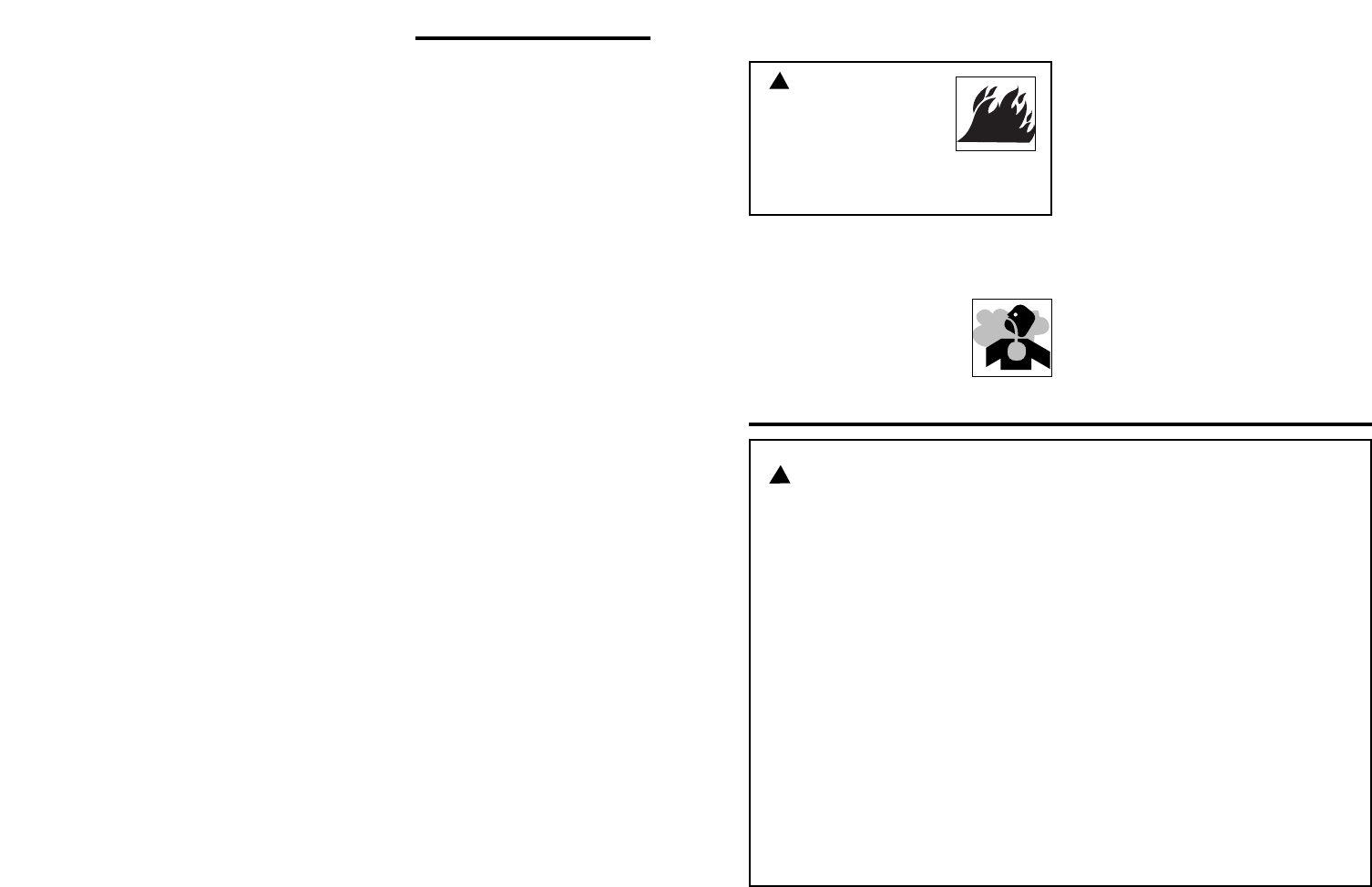
1. Do not smoke when spraying paint,
insecticides, or other flammable sub-
stances.
2. Use a face mask/respira-
tor when spraying and
spray in a well ventilated
area to prevent health and
fire hazards.
3. Do not direct paint or other sprayed
material at the compressor. Locate
compressor as far away from the
spraying area as possible to minimize
overspray accumulation on the com-
pressor.
4. When spraying or cleaning with sol-
vents or toxic chemicals, follow the
instructions provided by the chemical
manufacturer.
5
Spraying Precautions
Do not spray flamma-
ble materials in vicin-
ity of open flame or
near ignition sources including
the compressor unit.
!
WARNING:
Breathable Air Warning
This compressor/pump is not equipped and should not be used “as
is” to supply breathing quality air. For any application of air for
human consumption, the air compressor/pump will need to be fitted
with suitable in-line safety and alarm equipment.This additional
equipment is necessary to properly filter and purify the air to meet
minimal specifications for Grade D breathing as described in
Compressed Gas Association Commodity Specification G 7.1 - 1966,
OSHA 29 CFR 1910. 134, and/or Canadian Standards Associations
(CSA).
DISCLAIMER OF WARRANTIES
In the event the compressor is used for the purpose of breathing air
application and proper in-line safety and alarm equipment is not
simultaneously used, existing warranties shall be voided, and
Campbell Hausfeld disclaims any liability whatsoever for any loss,
personal injury or damage.
!
DANGER:
8. Follow all local electrical and safety
codes, as well as the National
Electrical Code (NEC) and the
Occupational Safety and Health Act
(OSHA).
9. Wiring and fuses should follow electri-
cal codes, current capacity, and be
properly grounded.
10. Electric motors must be securely and
adequately grounded. See grounding
instructions and extension cord infor-
mation in this manual.
11. Always disconnect power source
before working on or near a motor, or
its connected load. If power discon-
nect point is out-of-sight, lock it in the
open position and tag to prevent
unexpected application of power.
12. Guard all moving parts; keep visitors
away. Never allow children in work
area.
13. Use only a properly grounded outlet
that will accept a three pronged plug,
and wear shoes to prevent shock
hazards.
14. Be careful when touching exterior of
operating motor; it may be hot
enough to cause injury.
15. Protect power cable from coming in
contact with sharp objects.
16. Clean electrical or electronic equip-
ment with an approved cleaning
agent, such as dry, nonflammable
cleaning solvent.
17. To avoid spontaneous combustion,
discard waste rags into approved
metal waste cans.
18. Never store flammable liquids or
gases in vicinity of compressor.
19. When spraying with solvent of toxic
chemicals, follow instructions provid-
ed by the chemical manufacturer.
20. Spray in a well ventilated area, to
keep fumes from collecting and caus-
ing health and fire hazards.
21. Do not spray in vicinity of open
flames or other places where a spark
can cause ignition. Do not smoke
when spraying paint, insecticides, or
other flammable substances.
22. Use a respirator when spraying.
23. NEVER reset safety valve or pres-
sure switch. Keep safety valve free
from paint and other accumulations.
This provides safety against over
pressure.
24. Do regular maintenance; keep all
nuts, bolts, and screws tight, to be
sure equipment is in safe working
condition .
25. Keep cleaning rags and other flam-
mable waste materials in a tightly
closed metal container and dispose of
later in the proper fashion.
26. Drain tanks of moisture after each
day’s use. If unit will not be used for a
while, it is best to leave drain cock
open until such time as it is to be
used. This will allow moisture to com-
pletely drain out and help prevent
corrosion of inside of tank.
27. Inspect tank yearly for rust, pin holes
or any other imperfections that could
cause it to become unsafe. NEVER
weld or drill holes in air tank.
Safety Instructions (continued)
4



